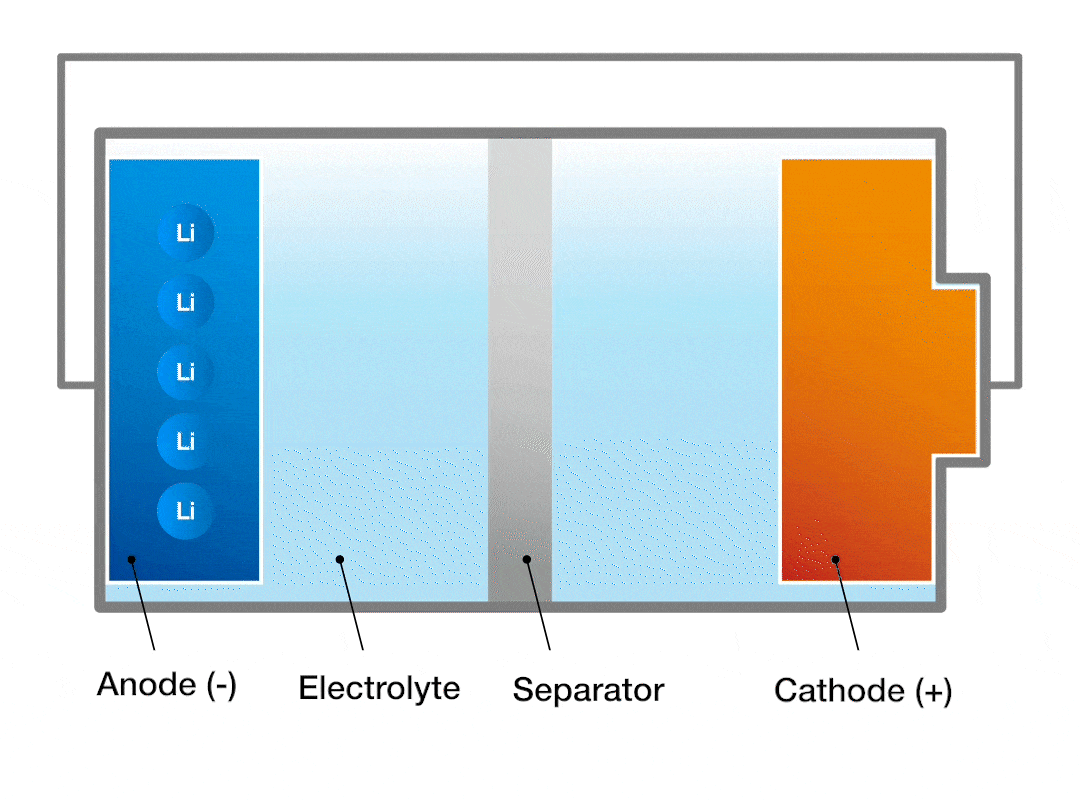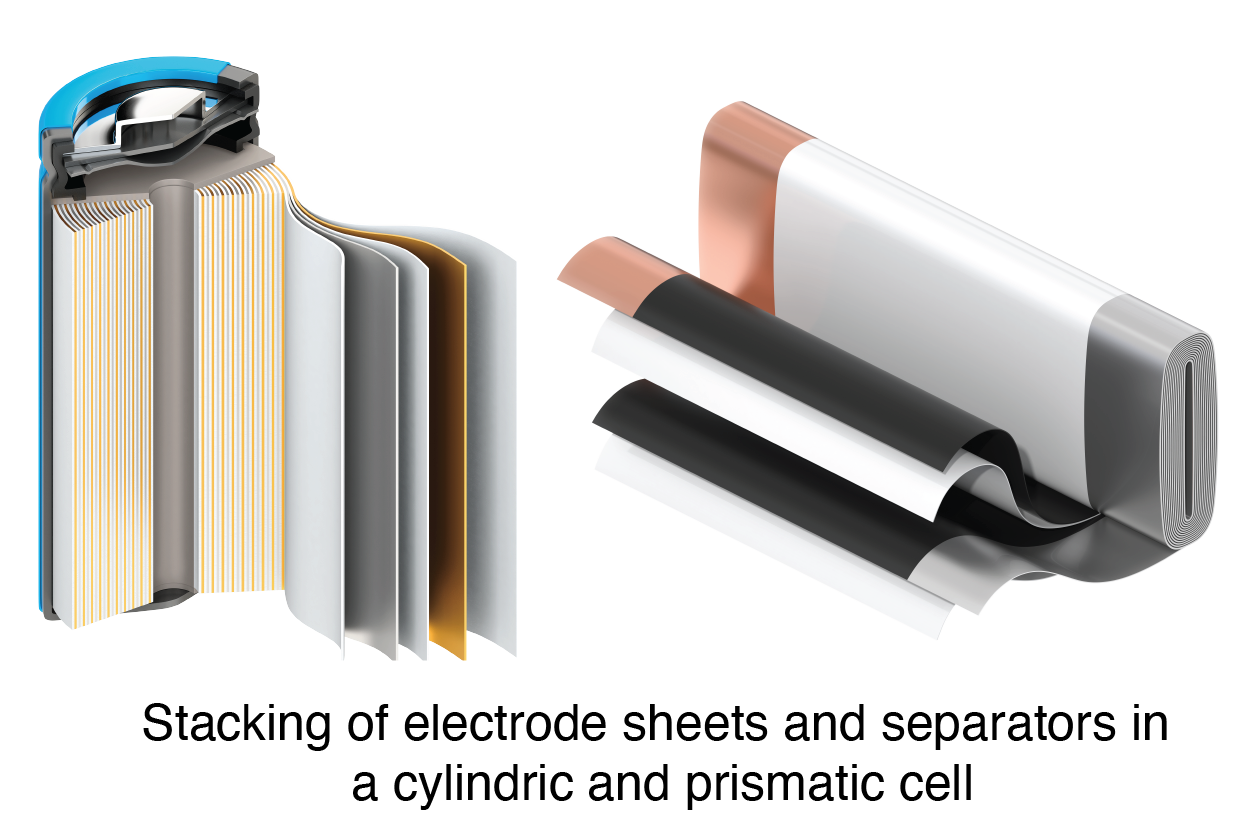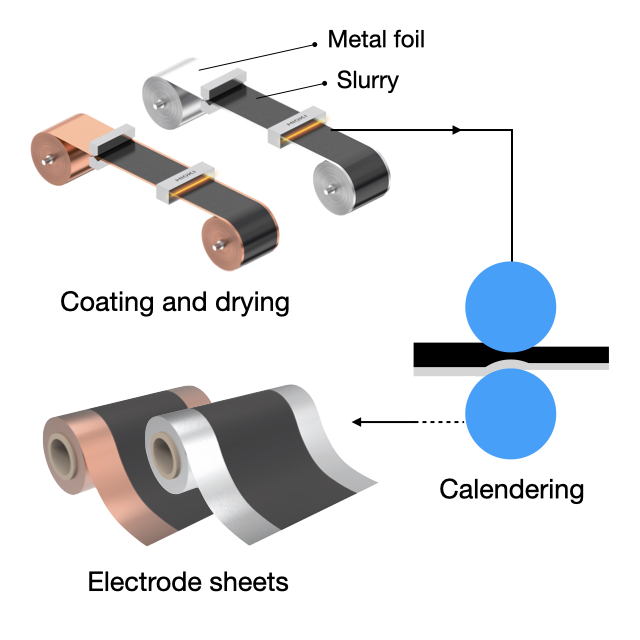What are the Electrode Sheets that Greatly Affect the Quality of Lithium-ion Batteries?
Lithium-ion Battery structure
There are four major components of a Lithium Ion battery:
1. Cathode (Positive electrode)
2. Anode (Negative electrode)
3. Separator, which avoid contact between the electrodes
4. Electrolyte


Anode-Separator-Cathode are stacked together in a repeating cycle and electrolyte is filled into the space in between. Lithium ions move between the cathode and anode via the electrolyte. This allows energy to be stored and used.
What is an electrode sheet for lithium-ion batteries
Electrode sheets are made by coating a metal foil with a liquid called slurry. Typically, a positive electrode is made of aluminum and a negative electrode is made of copper. The electrode sheet is a key component of the battery and consequently has a significant impact on its overall quality.
Electrode sheet fabrication process
In the electrode sheet production process, electrode slurry is coated onto the metal foil (current collector) and dried. The layer fabricated is called the composite layer. Then the sheet is pressed with a metal roller to increase the strength of the composite layer and improve electrical conductivity (“calendering”).
These are some key points to keep in mind when fabricating electrodes with regard to battery performance.
- Uniformity of thickness when applying the electrode slurry
- Electrical property uniformity within the electrode sheet surface
- Contact resistance between composite layer and current collector

Quality Improvement Points
Batteries with lower internal resistance have better energy efficiency and longer life. The quality of lithium-ion batteries can be improved by considering the uniformity of electrode sheet thickness and the electrical properties that vary during the drying and pressing process. The information acquired from the considerations can also serve as a quality indicator on the production line.
HIOKI offers the RM2610 Electrode Resistance Measurement System as a means of managing electrode sheets based on an evaluation of their resistance. The system separates and quantifies the resistance of an electrode sheet into the resistance of the composite layer and the interface resistance (contact resistance between the current collector and the composite layer). Users can observe these two parameters by measuring the surface of the electrode sheet and then quantifying them using proprietary analytical techniques.

